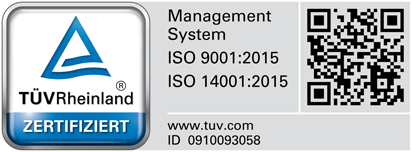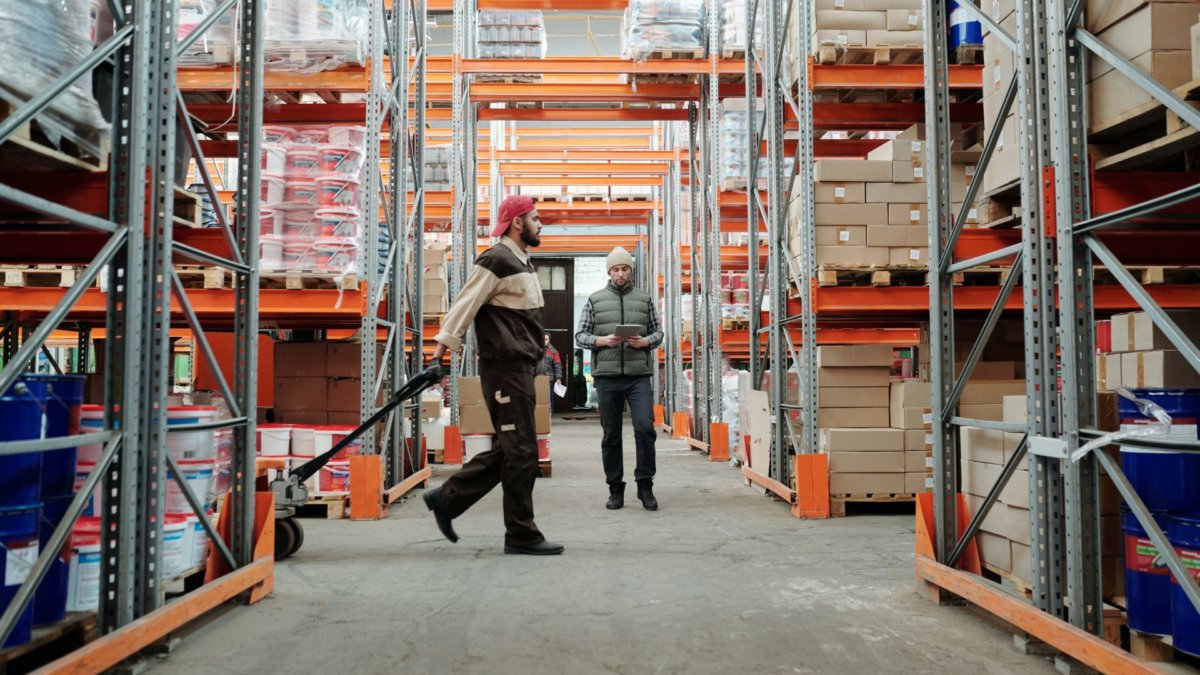
Notification
22. February 2024
Flow rack
22. February 2024In the fast-paced world of logistics, scheduling is an indispensable part of getting goods from A to B efficiently and on time. It is the backbone of the supply chain, ensuring that everything runs smoothly and without interruptions. Scheduling is concerned with planning, managing and controlling the flow of goods and information to ensure that the right products are in the right place at the right time.
In this blog post, we will take an in-depth look at the topic of replenishment in logistics. We will define what replenishment means, look at its role in the supply chain and introduce the different methods and techniques used in this area. We will also explore how replenishment affects warehouse management and transportation, and what technologies can improve the replenishment process. Finally, we will look at the challenges that can arise in replenishment and how these can be overcome.
Important points summarized
- Replenishment plays a crucial role in optimizing warehouse management and transport planning.
- Different scheduling methods and techniques, such as reorder point procedures, order frequency procedures, optimization algorithms as well as artificial intelligence (AI) and machine learning, have their respective advantages and disadvantages.
- Technologies such as ERP systems, AI and machine learning, and advanced planning and scheduling (APS) systems can significantly improve the replenishment process by increasing accuracy, efficiency and transparency, automating complex calculations and providing real-time information.
- These technologies can help to reduce costs, increase customer satisfaction and boost a company’s competitiveness.
What is scheduling in logistics?
Scheduling in logistics refers to the planning, control and monitoring of the flow of goods and information within a supply chain. It encompasses a range of tasks, including determining delivery times, selecting means of transportation, allocating stock levels and coordinating deliveries. The main goal of MRP is to ensure that the right products are in the right place at the right time to maximize customer satisfaction and increase operational efficiency.
There are different types of scheduling in logistics that can be used depending on the specific requirements and objectives of the company:
- Demand-based scheduling: this type of scheduling involves planning orders and deliveries based on current or forecasted demand. It is often used in industries with high customer throughput and highly fluctuating demand, such as retail.
- Inventory-based planning: Orders and deliveries are planned on the basis of current stock levels and predicted capacity utilization. This method is often used in industries with stable demand patterns and high inventory holding costs.
- Deadline-oriented scheduling: This type of scheduling focuses on meeting delivery deadlines. It is often used in industries where punctual delivery is of crucial importance, such as the automotive industry or mechanical engineering.
The role of scheduling in the supply chain
Replenishment plays a crucial role in the supply chain as it significantly influences the efficiency and effectiveness of delivery processes. Through effective replenishment, companies can ensure that their products are in the right place at the right time, resulting in higher customer satisfaction. In addition, good replenishment can help to avoid overstocking, reduce inventory costs and improve the rotation of goods.
An example of the application of replenishment in practice is a retail company that uses demand-based replenishment. Based on historical sales data and forecasts of future sales trends, the company plans its orders and deliveries to ensure it always has enough stock to meet customer demand. By using this method, the company can avoid overstocking and the associated costs, while ensuring that it is never sold out.
Another example is a car manufacturer that uses time-based scheduling. The manufacturer plans its production and deliveries based on the delivery dates it has agreed with its customers. By accurately planning and coordinating deliveries, the manufacturer can ensure that its products always reach customers on time, resulting in higher customer satisfaction.
In both examples, MRP enables companies to manage their supply chains efficiently and achieve their business goals. It is an indispensable tool for any company that wants to optimize its delivery processes and improve its competitiveness in the market.
Disposition methods and techniques
In logistics, there are a variety of methods and techniques for scheduling based on a company’s specific requirements. Here are some of the most common:
- Reorder point method: In this method, an order is triggered when inventory reaches a certain point, known as the reorder point. The advantage of this method is its simplicity and ability to ensure constant availability of goods. The disadvantage is that it does not respond well to sudden changes in demand or supply.
- Order frequency method: In this method, orders are placed at regular intervals, regardless of current stock levels. This can help to reduce ordering and shipping costs, but carries the risk of overstocking or stock-outs if demand changes significantly.
- Optimization algorithms: These sophisticated methods use mathematical models and algorithms to determine the optimal quantity and timing for orders. They can be very accurate and enable significant cost savings, but require specialized software and expert knowledge.
- Artificial intelligence (AI) and machine learning: These advanced techniques use data analysis and predictive models to automate and optimize replenishment. They can be very effective, but require a large amount of high-quality data and can be expensive to implement.
Each of these methods has its own advantages and disadvantages and can be differently effective in different situations. It is important to consider the specific needs and goals of your business to choose the best method for your scheduling.
The influence of scheduling on warehouse management and transportation
Materials planning also plays a decisive role in optimizing warehouse management. It ensures that the right quantity of materials and products are available in the warehouse at the right time and in the right place. By planning and controlling the flow of materials, MRP can help to avoid excess stock, improve stock rotation and reduce storage costs.
In addition, effective replenishment can help to improve the flexibility and accuracy of material movements within the warehouse. With the help of technologies such as Warehouse Management Systems (WMS), MRP can optimize storage location management and increase the efficiency of picking and receiving.
The role of scheduling in the planning and execution of transportation
In terms of transportation, scheduling ensures that goods and merchandise are transported efficiently from A to B. It includes selecting the appropriate means of transport. It includes selecting the appropriate means of transportation, planning the optimal routes and schedules and coordinating with suppliers, customers and transport service providers.
Good scheduling can help to reduce transportation costs, shorten delivery times and improve the reliability and punctuality of deliveries. It can also help to improve supply chain visibility and traceability, which is particularly important in industries with strict supply chain security and compliance requirements.
The role of technology in scheduling
There are a number of technologies that can support and improve scheduling. Here are some examples:
- ERP systems (Enterprise Resource Planning): ERP systems are integrated software solutions that support the management and control of a company’s various business processes. In terms of replenishment, ERP systems can help forecast demand, plan and track orders, and optimize inventory management.
- AI (artificial intelligence) and machine learning: AI and machine learning can be used to recognize patterns in data and predict future trends. In replenishment, these technologies can help to forecast demand more accurately, optimize order quantities and improve overall supply chain performance.
- Advanced Planning and Scheduling (APS) systems: APS systems are specialized software solutions that help companies plan and optimize their production and delivery processes. They can help to identify bottlenecks, use resources efficiently and minimize delivery times.
How these technologies improve the scheduling process
These technologies can improve the scheduling process in various ways. For one, they can help improve the accuracy and efficiency of scheduling by automating complex calculations and analysis that would otherwise be time-consuming and error-prone.
Secondly, they can help improve visibility and control over the replenishment process by providing real-time information and analytics that enable managers to make informed decisions and respond quickly to changes in demand or supply.
Finally, these technologies can help reduce costs and increase customer satisfaction by helping to avoid overstocking, shorten delivery times and improve the reliability of deliveries.
The future of scheduling in logistics
Looking to the future, technology is expected to play an increasingly important role in scheduling. With advances in AI and machine learning, forecasting models are becoming more accurate and can take more and more factors into account, leading to more efficient and effective scheduling.
At the same time, the demands on logistics are constantly evolving, with a growing focus on sustainability, resilience and customer satisfaction. This will pose new challenges for dispatching, but also open up new opportunities for innovation and improvement.
Overall, it is clear that scheduling is and will remain a crucial factor for success in logistics. With the right use of methods, techniques and technologies, it can help to significantly increase a company’s performance and competitiveness.

